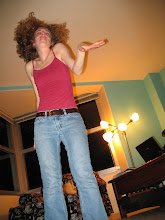When I visited the
The NMAI is housed in the old U.S. Custom House, an imposing beaux arts building. I support repurposing buildings, but this reuse boggles the imagination. Built at the turn of the 20th century, the building is a monument to classic, Western civilization and its ideals. Massive statues of Greek goddesses flank the imposing staircase. The façade is lousy with Greco-Roman design motifs. The interior of the building glorifies the early Repulic. A series of tableaus, which border a stunning rotunda, narrate the vitality of American trade and commerce. Interspersed between the triumphant, nationalistic tableaus are portraits of famous Western explorers, including Amerigo Vespucci, Henry Hudson, and Christopher Columbus—the very people whose “discoveries” eventually wreaked havoc on the Native American way of life. Symbols matter and the museum’s very home undercuts its mission to celebrate, preserve, study, and exhibit the life, languages, literature, history, and arts of Native Americans.
It’s an unfair, but true fact that museums of ethnic/minority history can’t simply be good or great, they have to be outstanding. These museums are treated as levelers—their unstated missions: to create parity. Our nation’s flagship museums have long segregated our history, celebrating the accomplishments of the white, male majority. In turn, museums dedicated to single minority experience have emerged, creating a vast system of separate, but equal. When will museums have their Brown vs. Board of Education moment? Separate is not equal. The philosophy of parceling our history to discrete institutions creates an untenable educational burden. These museums cannot simply share objects and bring to life historic events, they must also confront stereotypes and battle the prejudices of the majority, while providing uplift and affirmation for the minority group they represent.
Embracing this need for affirmation, the current exhibition on view, Identity by Design: Tradition, Change, and Celebration in Native Women's Dresses, was visually stunning. The dresses decorated with glass beads shimmered and glowed under the gallery’s soft lights. The breathtakingly elaborate and complex patterns testified to incredible craftsmanship and skill. Individual displays within the exhibition were thought provoking, like the evolution of native dress making from one skin dresses to three skin dresses. As the tribes’ acculturated to capitalism, more and more skins were used; Native women needed more a larger surface area to decorate with the beads they acquired through trade with the Europeans. The “Ghost Dance” dresses, which were nearly hidden from view, brought me close to tears. These 19th century dresses were created for a ceremonial dance which anticipated the coming of a messiah who would restore a life without European encroachment or values. On these dresses, there was not a trade bead in sight. Rather, these dresses had their decorative motifs painted on, a conscious emulation of pre-contact decorating practices.
While the objects in the exhibition, met the burden of uplift, the labels did not. In fact, some labels came very close to cementing stereotypes and prejudices. The labels did something dangerous; they conflated the past with the present, privileging modern practice and experience as undiluted, unmediated connections to historic custom and life.
Many of the labels had quotes which discussed the art of tribal dress making. These quotations, placed in italic script underneath the tombstone, were excised from conversations with Native American dressmakers working today. These quotations ran the gambit; dressmakers commented on only having time to sew while there children were at school, learning to sew, trying to stay true to ancient designs, choosing materials, and wearing the garments they made. While these quotations were dated 2005, by placing these quotations directly on a label for an object from the 19th century, the past and the present were dizzyingly merged. It was as if, modern Native American women were speaking for the unknown makers of these dresses. But these women’s experience and those women’s experiences were not the same. These quotations romanticize Native American oral traditions and Native Americans, as mystics with unfettered access to ancient wisdom. Yes, Native American culture is strongly routed in an oral tradition and emphasizes the dissemination of tribal knowledge from one generation to another, but these oral traditions are not a Möbius strip—current practice cannot wholly inform the interpretation of historic practice. What does it mean when an institution striving to combat its culture’s stereotypes ends up reinforcing them?
Our nation’s museums, particularly the National Museum of American History, need to address how to fully present our kaleidoscopic, multicultural, multi-layered history so that our museums of ethnic and minority history can be relieved of their untenable burdens. We still need these museums—depth and specialization are important—but let’s give them the chance to really dig in deep.

No comments:
Post a Comment